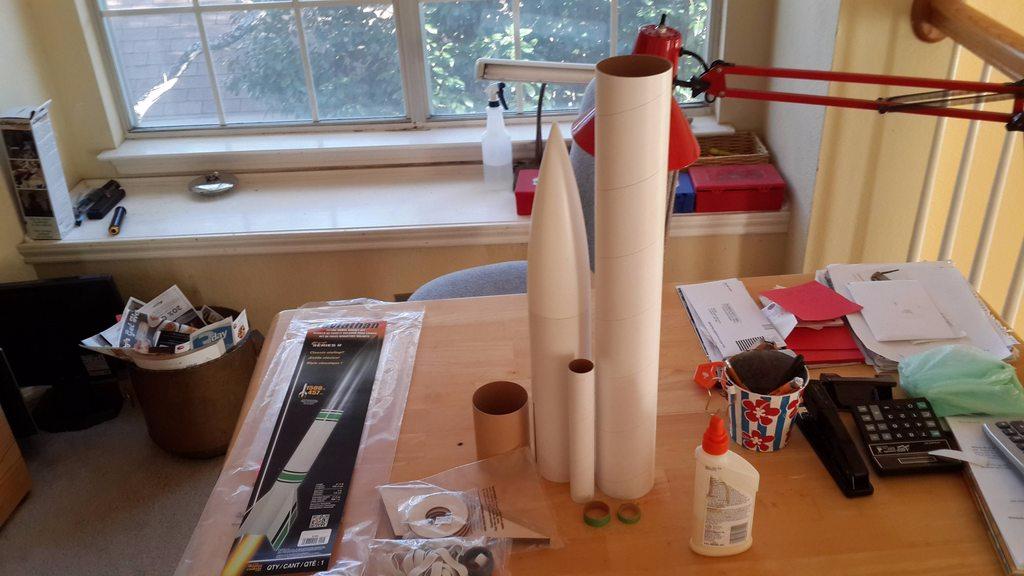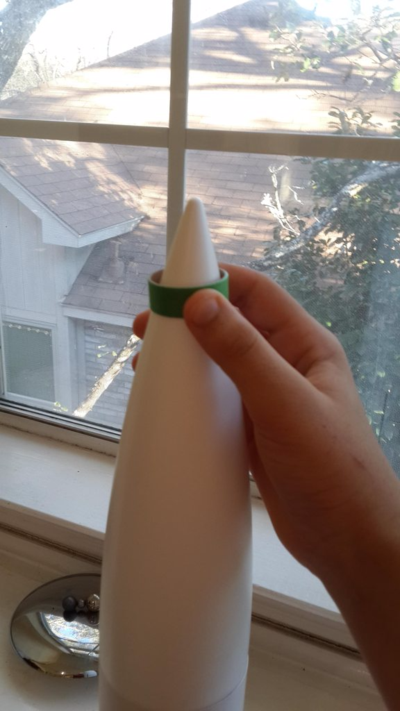I want to do most of my epoxy at once, and since the retainer calls for epoxy I am using JB Weld. Saves me a little $$
Sounds like you are using the syringe of JB Weld. You can get the same thing in Pro size and in the long run, you save A LOT of money. The 2 x 4 oz size has lasted me 4 rockets. Not sure you will have enough in the syringe to get the 8 external fillets you will need and at the right thickness. I have found that mixing what you need for 1-2 applications, waiting for it to cure, then moving on gives you a much better build because you will not feel rushed. 5 Min Epoxy sets up FAST and most kinds are a bit runny. Even if you don't see it running, you still want gravity to hold it in place so you get the best possible bond.
Taking just the retainer / rear section for example, I typically do that in 2 separate applications. Fillet the centering ring to the BT and a very thin fillet to the MM, stand the tube with the aft end up. Once that sets, I apply the thin layer to the end of the MM (not to the edge, you do not want epoxy in the MM tube), slide on the retainer and then stand it on the retainer. This gives you a little fillet forward of the retainer too.
Quick note using epoxy, tape is your friend. Tape the retainer before sliding it on. The last thing you want is stray epoxy (and it strays. The stuff is sticky) getting into the threads. Just remember to remove it before the epoxy sets. I use the mixing cup as my guide. Once it starts to get really tacky and especially if it starts to get stringy, I remove the tape immediately. Same goes for fillets. Tape is cheap. Epoxy is great stuff, but it can ruin a build if you don't police it.
Also, get yourself some of this:
https://www.walgreens.com/store/c/w...l-first-aid-antiseptic/ID=prod6056576-product 16 oz of 91% Isopropyl Alcohol. Much cheaper and more concentrated than the pads you can buy. That and some paper towels can fix most minor epoxy issues provided you catch them early enough. This works even if the epoxy has started to set, but only in that initial cure period. Once it cures, it is there for good. 91% is the best stuff, 70 is ok, and anything below that (there is a lot of 50 and 30% especially in pads) is crap. Isopropyl is cheap. You are mostly paying for packaging and as long as you keep it capped, it is good for a long time. But keep it capped. It is very volatile. Put some on a paper towel, mix your epoxy, apply, make sure it looks nice, remove tape, recheck that it looks nice. Rinse and repeat.
Sorry for the longer post. I went through what you are doing a few months back and had to learn the hard way.





















